Zhigang Peng
DD-CISENet: Dual-Domain Cross-Iteration Squeeze and Excitation Network for Accelerated MRI Reconstruction
Apr 28, 2023


Abstract:Magnetic resonance imaging (MRI) is widely employed for diagnostic tests in neurology. However, the utility of MRI is largely limited by its long acquisition time. Acquiring fewer k-space data in a sparse manner is a potential solution to reducing the acquisition time, but it can lead to severe aliasing reconstruction artifacts. In this paper, we present a novel Dual-Domain Cross-Iteration Squeeze and Excitation Network (DD-CISENet) for accelerated sparse MRI reconstruction. The information of k-spaces and MRI images can be iteratively fused and maintained using the Cross-Iteration Residual connection (CIR) structures. This study included 720 multi-coil brain MRI cases adopted from the open-source fastMRI Dataset. Results showed that the average reconstruction error by DD-CISENet was 2.28 $\pm$ 0.57%, which outperformed existing deep learning methods including image-domain prediction (6.03 $\pm$ 1.31, p < 0.001), k-space synthesis (6.12 $\pm$ 1.66, p < 0.001), and dual-domain feature fusion approaches (4.05 $\pm$ 0.88, p < 0.001).
Dual-Domain Cross-Iteration Squeeze-Excitation Network for Sparse Reconstruction of Brain MRI
Oct 05, 2022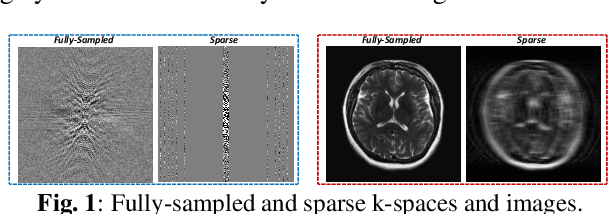
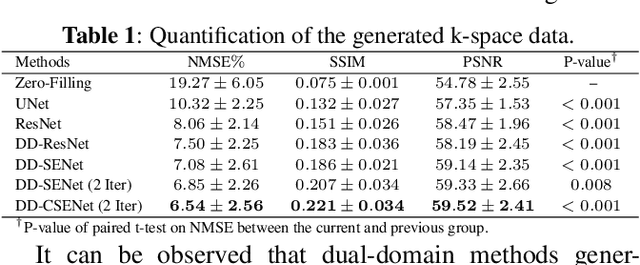

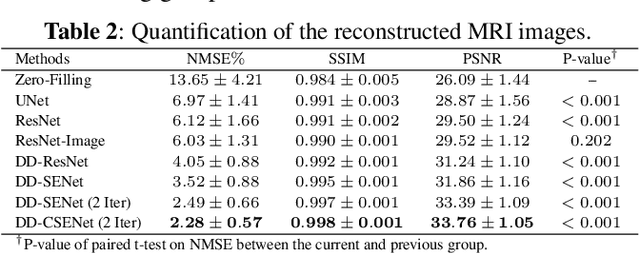
Abstract:Magnetic resonance imaging (MRI) is one of the most commonly applied tests in neurology and neurosurgery. However, the utility of MRI is largely limited by its long acquisition time, which might induce many problems including patient discomfort and motion artifacts. Acquiring fewer k-space sampling is a potential solution to reducing the total scanning time. However, it can lead to severe aliasing reconstruction artifacts and thus affect the clinical diagnosis. Nowadays, deep learning has provided new insights into the sparse reconstruction of MRI. In this paper, we present a new approach to this problem that iteratively fuses the information of k-space and MRI images using novel dual Squeeze-Excitation Networks and Cross-Iteration Residual Connections. This study included 720 clinical multi-coil brain MRI cases adopted from the open-source deidentified fastMRI Dataset. 8-folder downsampling rate was applied to generate the sparse k-space. Results showed that the average reconstruction error over 120 testing cases by our proposed method was 2.28%, which outperformed the existing image-domain prediction (6.03%, p<0.001), k-space synthesis (6.12%, p<0.001), and dual-domain feature fusion (4.05%, p<0.001).
ComboNet: Combined 2D & 3D Architecture for Aorta Segmentation
Jun 09, 2020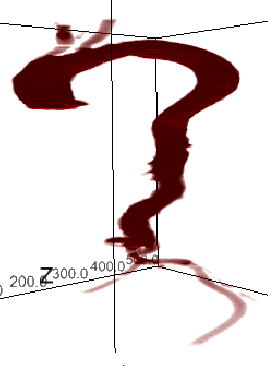

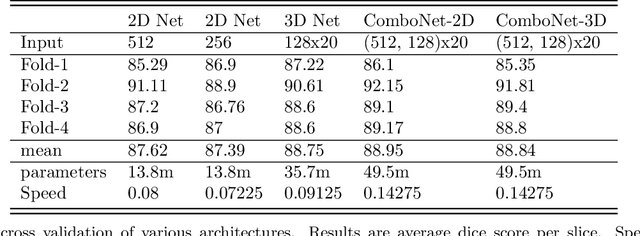
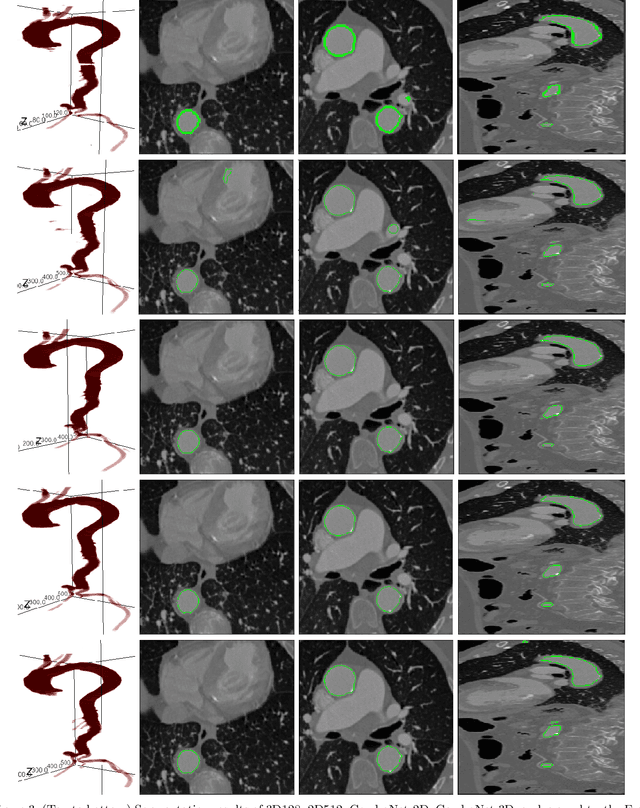
Abstract:3D segmentation with deep learning if trained with full resolution is the ideal way of achieving the best accuracy. Unlike in 2D, 3D segmentation generally does not have sparse outliers, prevents leakage to surrounding soft tissues, at the very least it is generally more consistent than 2D segmentation. However, GPU memory is generally the bottleneck for such an application. Thus, most of the 3D segmentation applications handle sub-sampled input instead of full resolution, which comes with the cost of losing precision at the boundary. In order to maintain precision at the boundary and prevent sparse outliers and leakage, we designed ComboNet. ComboNet is designed in an end to end fashion with three sub-network structures. The first two are parallel: 2D UNet with full resolution and 3D UNet with four times sub-sampled input. The last stage is the concatenation of 2D and 3D outputs along with a full-resolution input image which is followed by two convolution layers either with 2D or 3D convolutions. With ComboNet we have achieved $92.1\%$ dice accuracy for aorta segmentation. With Combonet, we have observed up to $2.3\%$ improvement of dice accuracy as opposed to 2D UNet with the full-resolution input image.
Deep learning for seismic phase detection and picking in the aftershock zone of 2008 Mw7.9 Wenchuan
Jan 18, 2019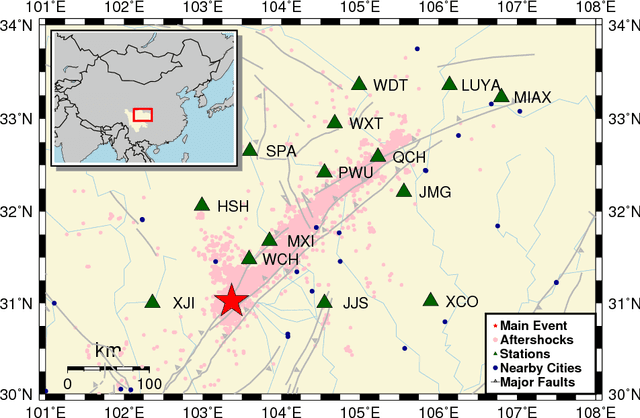

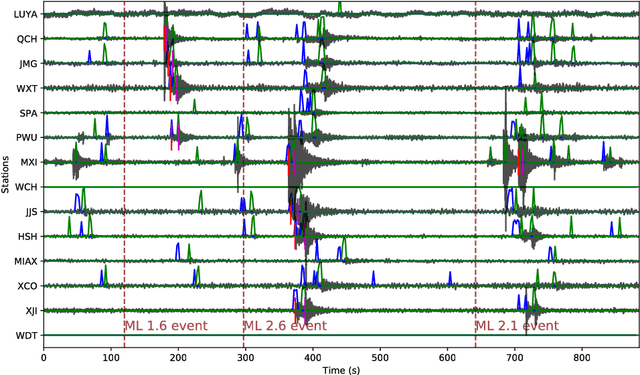
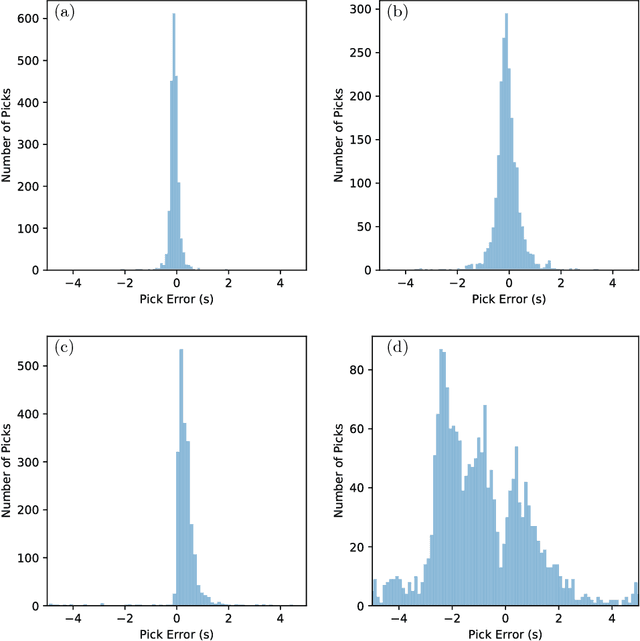
Abstract:The increasing volume of seismic data from long-term continuous monitoring motivates the development of algorithms based on convolutional neural network (CNN) for faster and more reliable phase detection and picking. However, many less studied regions lack a significant amount of labeled events needed for traditional CNN approaches. In this paper, we present a CNN-based Phase- Identification Classifier (CPIC) designed for phase detection and picking on small to medium sized training datasets. When trained on 30,146 labeled phases and applied to one-month of continuous recordings during the aftershock sequences of the 2008 MW 7.9 Wenchuan Earthquake in Sichuan, China, CPIC detects 97.5% of the manually picked phases in the standard catalog and predicts their arrival times with a five-times improvement over the ObsPy AR picker. In addition, unlike other CNN-based approaches that require millions of training samples, when the off-line training set size of CPIC is reduced to only a few thousand training samples the accuracy stays above 95%. The online implementation of CPIC takes less than 12 hours to pick arrivals in 31-day recordings on 14 stations. In addition to the catalog phases manually picked by analysts, CPIC finds more phases for existing events and new events missed in the catalog. Among those additional detections, some are confirmed by a matched filter method while others require further investigation. Finally, when tested on a small dataset from a different region (Oklahoma, US), CPIC achieves 97% accuracy after fine tuning only the fully connected layer of the model. This result suggests that the CPIC developed in this study can be used to identify and pick P/S arrivals in other regions with no or minimum labeled phases.
 Add to Chrome
Add to Chrome Add to Firefox
Add to Firefox Add to Edge
Add to Edge